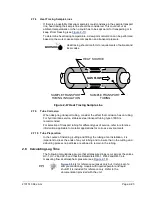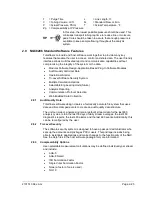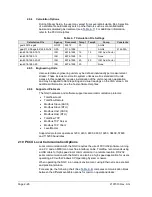
2101510 Rev. AG
Page 2–21
2.7 Sample Transport Tubing Design
Information in this section enables the user to design the sample transport tubing
connected between the TCR sample probe and the installed NGC. Minimizing
transport lag time and maintaining a single vapor phase sample are important
factors to consider when selecting transport tubing.
Lag time is the time required to purge out one volume of transport tubing and the
volume of the sample conditioning system.
2.7.1
Tube Quality
Use only good quality clean stainless steel chromatographic grade transport
tubing for carrier, calibration gas and sample lines. Use of poor quality stainless
steel tubing gives unsatisfactory results.
Do not use any type of plastic, Teflon
®
or Teflon
®
lined braided
steel tubing.
Transport tubing must be chromatographically clean. Tubing should be free of
hydrocarbon contamination and particles. During cutting, fitting and deburring, the
technician should insure that no particles are allowed to remain in the tubing.
2.7.2
Calculation
Sample transport lag time estimated calculations do not consider the volume of
the sample conditioning system. However, the following equation can be used as
a quick method to estimate lag time because normal transport tubing volume is
much greater than sample conditioning system tubing volume.
[ ]
.)
min
/
cc
(
Rate
Flow
Sample
Actual
)
Tubing
of
Feet
(
)
Tubing
of
Foot
per
cc
Volume
(
Time
Lag
×
=
For a detailed method of calculating lag time, see the next sub section,
2.7.3
Analysis Time
If analysis results are used for process control or custody transfer, it is important
to minimize the amount of time that the sample spends in transit from the TCR
sample probe to the NGC. To arrive at the total cycle time between representative
samples, sample transit time must be added to NGC cycle time.
2.7.4
Transit Volume
The total volume of sample gas in transit is calculated by multiplying volume per
foot of sample transport tubing by total length of tubing. To assist in making these
calculations, refer to
for internal volume of commonly used sample
transport tubing.






























